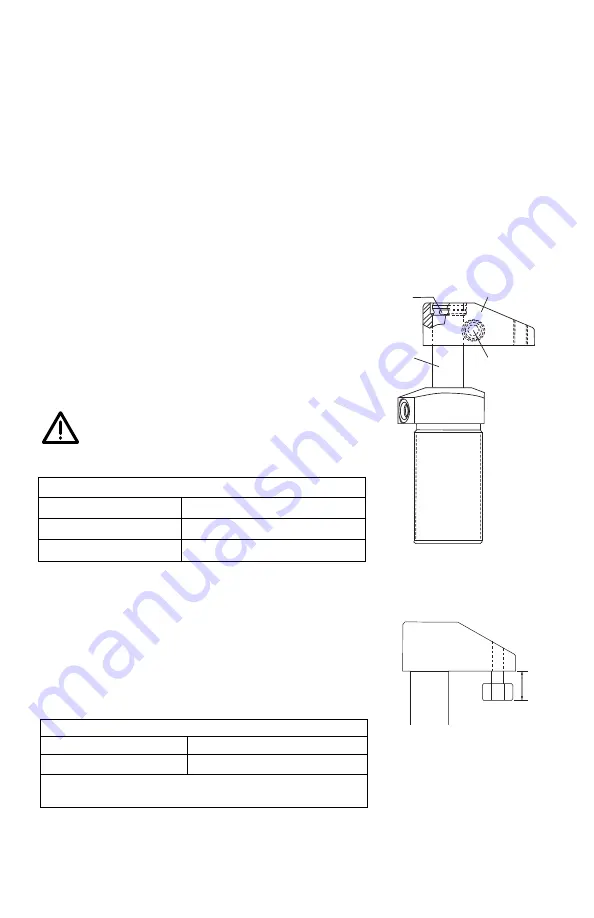
Change plunger rotation by lining up the letter on top of the plunger with the arrow on the side of the cylinder
opposite the ports. To change rotation, refer to illustrations and follow procedure below. You will need a
spanner wrench.
1. Position the arm on the plunger to provide a handle to grasp for moving the plunger.
(a) Release the clamp arm bolt.
(b) Remove the retaining ring and slide the clamp arm down the plunger until the top of the arm is 6 mm
(0.25") from the top surface of the plunger.
(c) Tighten the clamp arm bolt. DO NOT discard the retaining ring.
2. Place spanner wrench on bottom cylinder plug and turn the plug (facing you) counter-clockwise 4 turns.
NOTE:
Single-acting cylinders may need the bottom plug to be rotated more than 4 turns to help relieve
return spring tension.
3. Push down on the plunger and rotate it to line up the desired letter (L, R, S) with the arrow on the side of
the cylinder.
4. Once the letter and arrow are lined up, pull the plunger up, turn the bottom plug backin (clockwise) 4 turns,
and tighten firmly.
6.2 Attaching Clamp Arm
1. Remove the retaining ring from the top of the plunger.
2. Slide the clamp arm down over the plunger and use a
pliers to push the retaining ring back onto the plunger
groove. Orient the retaining ring so the retaining ring
gap will face the back of the clamp arm. See
illustration.
3. Move the clamp arm up until it is firmly against the retaining ring
and in the desired position. While maintaining this position,
torque the clamp arm bolt to specification listed below.
CAUTION: Inadequate torquing of the clamp arm bolt
could cause the arm to slip during operation. BE SURE
TO USE QUALITY GRADE 8 (12.9 DIN 912) SOCKET
HEAD CAP SCREWS (supplied with standard clamp arms).
6.3 Arms for Upper Flange Body Style
To use the upper flange body style cylinders, you have to be sure that the
contact bolt will clear the upper flange during operation. The clamp arm
must be long enough for the contact bolt to clear the upper flange as the
arm swings down. Clearance problems are most common when the final
clamping position is at the side of the cylinder and the contact bolt must
pass by the front or back of the upper flange as it swings down. You may
need to use the longer, CAL Series clamp arm for these applications.
6
Clamping arm
Clamping arm
bolt
Retaining ring
(Opening toward
back of clamp.)
Plunger
Clamp Arm Bolt Torque
Cylinder Capacity
Lubricated Torque
2,2 kN (500 lbs)
16,3 to 20,3 Nm (12 to 15 ft-lbs)
5,6 kN (1250 lbs)
32,5 to 39,3 Nm (24 to 29 ft-lbs)
Maximum Contact Bolt Length
Cylinder Capacity
Maximum Length
2,2 kN (500 lbs)
19,1 mm (0.75")
NOTE: Maximum length provided here is for 2,2 kN upper flange
models only.
Contact
Bolt
Max.
Length







































